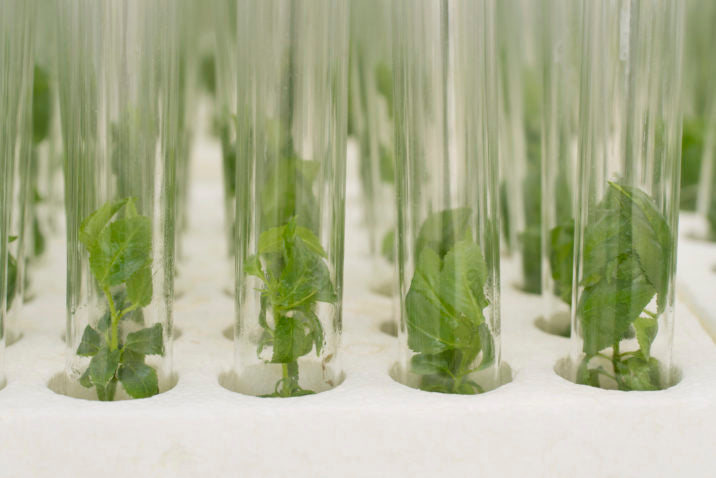
Micropropagation versus traditional plant propagation


The two terms sound similar, but they each have their own set of positives and negatives. In the cannabis industry, tissue culture (micropropagation) looks set to shape the future. But traditional plant propagation still has an important role to play.
For some strains of the cannabis Sativa plant, micropropagation is one of the only ways to ensure growth. Some strains, such as the famed Exodus Cheese, can only be grown using micropropagation methods, while others fair well when cultivated from seeds.
Let’s look at the two techniques, on both the home and business scale, and see which is best for your grow operation.
Micropropagation
So, What Is Micropropagation?
Let’s keep it simple. Micropropagation is the process of taking plant tissue from a living plant and using it to grow a new identical plant in laboratory conditions. Sometimes, all you need is a single cell from a plant, and you can grow a new, identical plant from that one cell, as long as specific parameters are met, of course. Micropropagation also allows you to develop multiple identical plants in a very short amount of time. This process has several distinct differences when compared to traditional propagation.
A somewhat controversial subject in its early days, micropropagation began making a name for itself in commercial industries in the ‘50s. Now, micropropagation is not only used but heavily relied on throughout many commercial sectors.
Micropropagation allows growers to reproduce notoriously tricky-to-grow plants and enables them to multiply disease-free plants in a short period of time. Finally, and maybe most importantly for the cannabis industry, micropropagation can be used to produce exact ‘copies’ of a specific species, reproducing plants with particular and important qualities.
For example, the cannabis industry is awash with “new” and “different” cannabis products, and consumers are beginning to look for specific cannabinoids in their cannabis products. Whether you want plants that carry high levels of CBG, CBD or THC, micropropagation is one way to ensure that your plants contain the elements you need for your business.
Stem tips, flowers, roots, leaves, or pollen can be used to gather the tissue you need for micropropagation. The type of tissue taken will usually be determined by the protocol for that specific plant or species. The gathered tissues are then placed in a sterile and strictly controlled environment, bursting with the correct hormones and nutrients for growth. Once in this supportive environment, the cells divide, and plantlets will begin to form.
Traditional Propagation
Traditional Propagation needs no explanation, and most of us have seen, at one point or another, a plant growing from seed. If you are a cannabis grower, then you know the challenges of cultivating from seed. If you are not using auto-feminized seeds, there is a significant chance of your plants turning out to be males, and if you want to harvest the buds, then having males popping up in the crop is highly undesirable.

Advantages and Disadvantages of using Micropropagation:
We’ve briefly discussed some of the most apparent benefits of using micropropagation, the main one being that it helps you grow almost identical, healthy plants in quick succession.
Furthermore, micropropagation allows you to cultivate plants that have specific characteristics such as colors, cannabinoids, terpenes, or other compounds, and resistance to viruses or diseases. For some people, the goal is to simply reproduce the mother plant in order to grow multiple exact replicas of that same plant. And all of this can be done much more quickly than traditional propagation.
It has been suggested that plants cultivated using micropropagation grow with not only vigor and speed, but offer better yields as well. In the cannabis industry, high yields equal high profits- and thanks to micropropagation, high gains can be achieved without sacrificing the quality of the plant.
However, there are some Disadvantages.
Micropropagation is not an easy process; it requires knowledge, a specific set of skills, and some initial cash to start up. Equipment can be expensive, and there is not a guarantee that the process will be successful. Not all plants do well with micropropagation, and you can end up with mutated plants or no plants at all. The growing environment needs to be tightly controlled and sterile in order to avoid any diseases or viruses.
Final Thoughts
What’s more - if you know how excellent a strain Exodus Cheese is to use in addressing various consumer need, then you need no convincing that micropropagation is vital for the cannabis industry’s future. Not only can tissue culture help to propagate these common strains, but it can help to propagate rare plants on the brink of extinction, and other plants that may have several beneficial qualities when grown in stringent conditions.
Micropropagation may have started off its stint on the cultivation stage with a modicum of disdain and distrust, but it is now embedded in most industries, especially that of cannabis. For some developing countries, tissue culture is a way to grow higher yields of food - food that would’ve otherwise been difficult to grow or non-existent. This food is not only essential for survival, but offers the developing nation avenues for trading and job creation, and essentially overcome seemingly impossible social and agricultural challenges.
RESOURCES:
https://www.scidev.net/global/policy-brief/the-role-of-non-gm-biotechnology-in-developing-wor.html
https://www.sciencedirect.com/topics/agricultural-...
Blog Categories
View by Level
Popular Blogs

6 Plant Tissue Culture Books to Keep Learning
Introduction Most of us are fans of books when it comes to learning a topic in detail and in a...
Read More
New Technical Agar Vs Supreme Agar
Introduction What’s the secret element that supports and holds plants in vitro? Not sure? It’s the solidifying agent. Solidifying agents...
Read MoreSubscribe to Our Newsletter








Join the conversation
Your email address will not be published. Required fields are marked